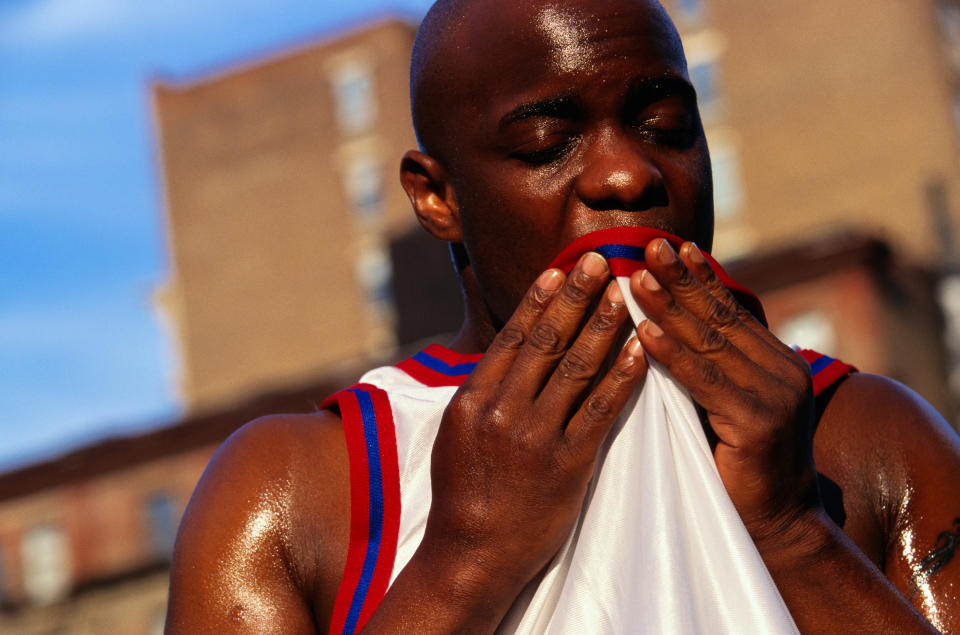Avoiding heat stroke and exhaustion as high temperature warnings loom
If you find yourself instantly dripping in sweat upon walking outside in the next few days, know that you’re not alone.
An alert from the National Weather Service (NWS) on Friday revealed that a massive heat wave will be spreading from the Midwest to the East Coast this weekend, putting as many as 200 million people at risk of heat stroke and heat exhaustion.
A map from the NWS shows that over dozen states have an “excessive heat warning,” which includes New York, Massachusetts, Michigan and Illinois. Such a heat warning signifies that there is likely to be “an onset of extremely dangerous heat conditions” in the next 12 hours. Dangerous conditions include a maximum heat index — defined as “how hot it feels” — that exceeds 105 degrees for at least two days.

NWS says individuals in these regions should “take precautions immediately” or “may become seriously ill or even die.” According to the Centers for Disease Control and Prevention (CDC), heat-related illnesses can include heat cramps, heat exhaustion and — the most severe form — heat stroke. Here is how to tell the difference, when to seek out help and the steps you can take to prevent all three.
Look at the impressive and widespread coverage of #heat related warnings and advisories across the Eastern two-thirds of the country. The hazy, hot and humid conditions will persist through the weekend. Be smart and stay cool! #HeatSafety pic.twitter.com/hemIJ79rOr
— National Weather Service (@NWS) July 18, 2019
Heat cramps are the least serious.
While still worth paying attention to, heat cramps are lowest on the CDC’s list of heat-related illnesses (aside from sunburn and heat rash). Heat cramps often happen during physical activity, and cause extreme sweating and pain.
Venkatesh Bellamkonda, MD, an emergency medicine specialist and assistant professor in emergency medicine at Mayo Clinic tells Yahoo Lifestyle that this occurs “when the body is expending too much water, or the electrolytes in the body are out of appropriate balance.” The best way to treat it is to stop physical activity, find shade and drink lots of water.
Heat exhaustion, the next level, may cause fainting
Warning signs of heat exhaustion, the second most serious heat-driven illness, are a fast but weak pulse, heavy sweating, headache, nausea and dizziness. Eventually the condition can progress to cause cold, clammy skin and — in some cases — fainting. According to Matthew J. Levy, D.O., M.Sc., Associate Professor of Emergency Medicine at Johns Hopkins University School of Medicine, it can lead to life-threatening illness. “It should be viewed as a wake-up call that the person isn’t doing well, and immediate action needs to be taken,” says Levy. “The biggest action is to get the person out of the heat and help him or her cool off.”
Heat stroke symptoms may include fever, vomiting and confusion.
The most dangerous heat-related condition is heat stroke. Bellamkonda says this happens when “body’s ability to handle the heat to your body have been outdone, and now the temperature in you is actually rising.” A fever above 102 or 103 in these conditions can signal it getting worse. “At this phase, often sweating slows or even stops, and people not only can faint but they can lose consciousness,” says Bellamkonda. “Sometimes people may become confused, or have severe vomiting at this stage too. This is where things are becoming quite dangerous.”
If symptoms like rapid pulse and clammy skin appear, take immediate action.
When heat stroke has taken over, there is no time to waste. John J. Hopkins Medical Center offers key tips for quickly addressing the symptoms of heat stroke. On top of bringing the person into the shade and removing any excess clothing, the experts urge individuals to actively work to lower the body temperature. “Apply ice packs to the groin and armpits, have the person lie down in a cool area with their feet slightly elevated,” they write. “Cool the person rapidly however you can.”
Remember heat-related illnesses are preventable
Although being struck with a heat-related illness can be dangerous, or even deadly, there are ways to stop the onset. Levy tells Yahoo Lifestyle that “prevention is key,” as is being overly cautious. “Stay in the air conditioning. Limit outdoor exposure if possible...If you must be outdoors, plan for frequent breaks,” he tells Yahoo Lifestyle. “Stay well-hydrated and avoid caffeine and alcohol...Check on elderly neighbors and family members, as well as those with chronic medical conditions.”
Pay close attention to children, the elderly and pets
Levy also notes that certain populations are more susceptible to these illnesses, and should be closely monitored. “Check on elderly neighbors and family members, as well as those with chronic medical conditions,” says Levy. “Don’t forget to check on pets. It’s too hot for them to be outside. Paws and pads can burn when on hot asphalt and concrete. Ensure pets have plenty of water and a cool place to be.” Bellamkonda agrees. “Take great care to not leave children or pets or other vulnerable people in vehicles unattended especially if the vehicle is not running.”
Don’t hesitate to call 911.
Perhaps most important: don’t wait to ask for help. “Despite attempts at prevention, heat related injuries will still occur...” says Levy. “If you see a loved one with a severe headache, or they are confused, or they lose consciousness, get them to medical attention urgently or even call 911 if needed.”
Read more from Yahoo Lifestyle:
Follow us on Instagram, Facebook and Twitter for nonstop inspiration delivered fresh to your feed, every day.
